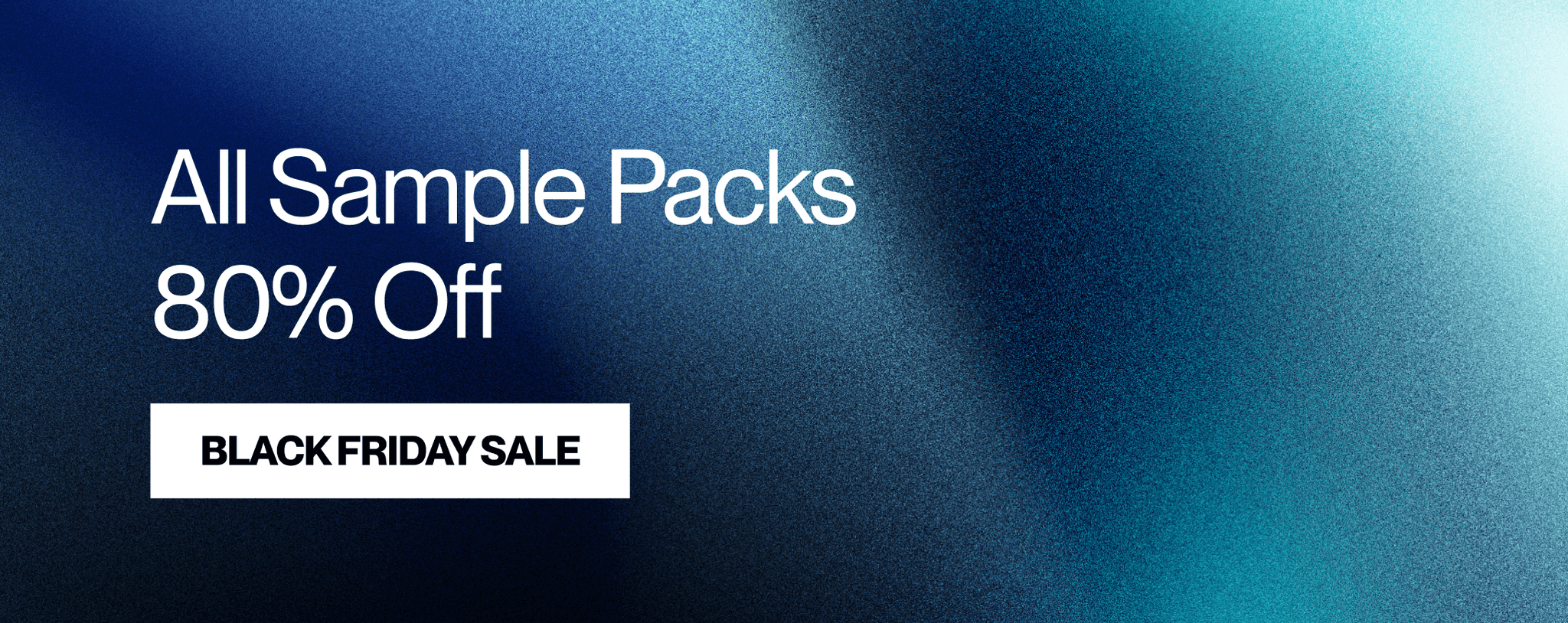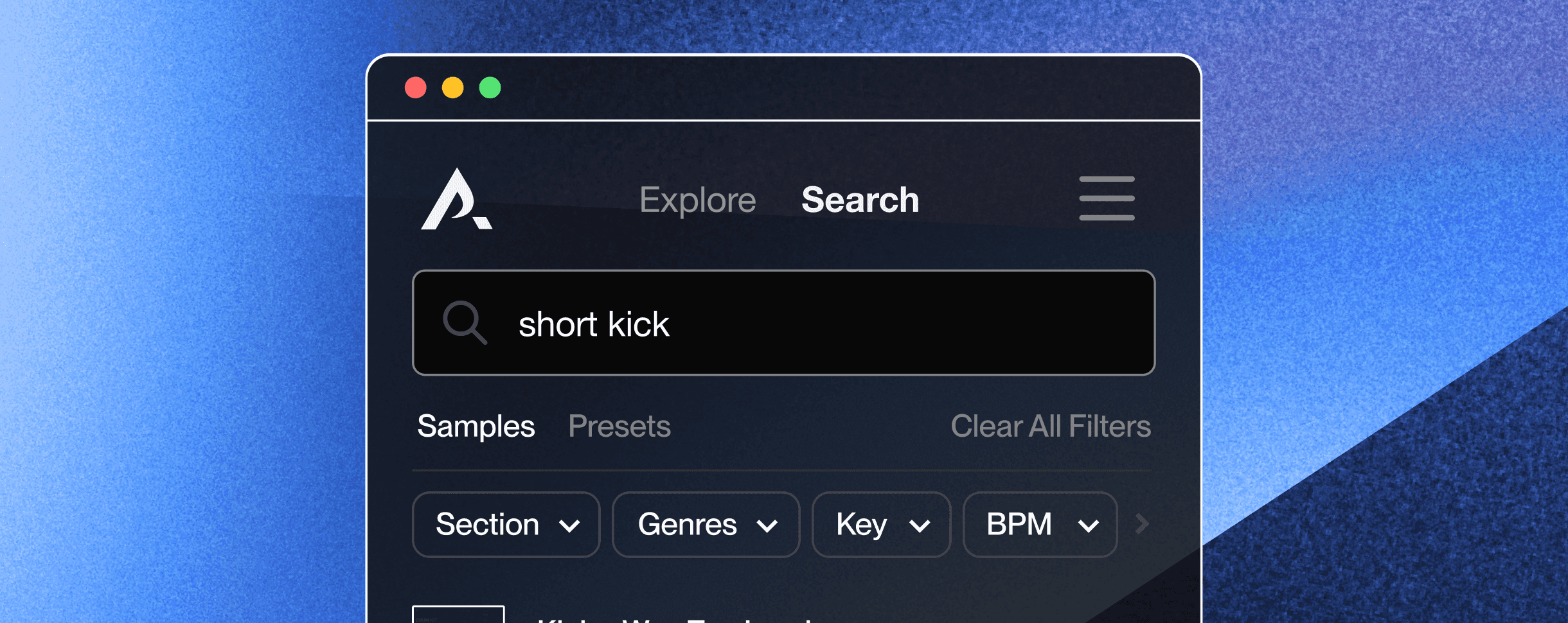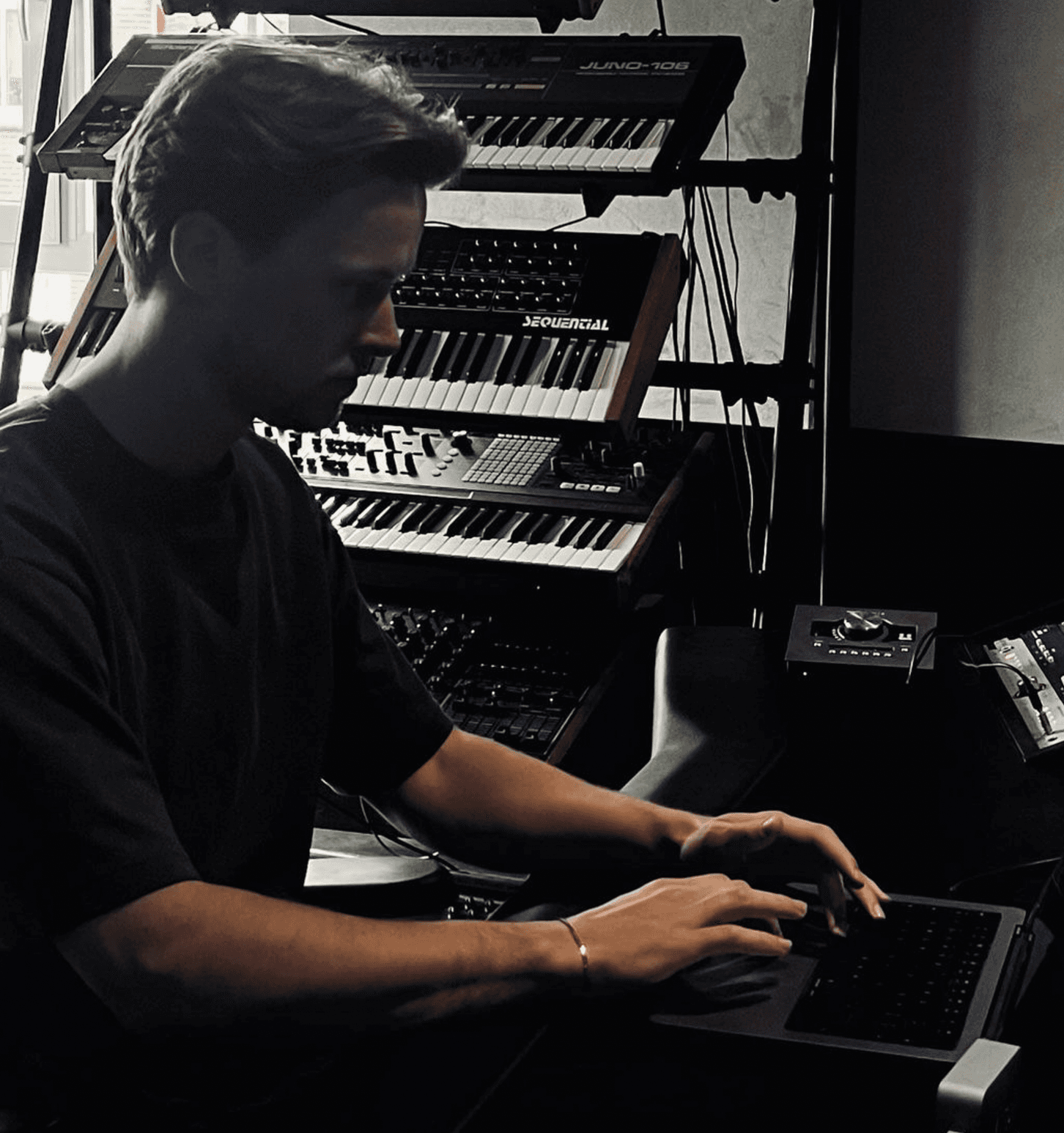
Niels Otter
Beat Making
20
min read
Jun 20, 2024
The art of beatmaking is one of crafting memorable hooks with hard hitting drums and basses or 808s. Whether you're an aspiring producer or a seasoned musician, understanding the essentials of beatmaking is key to producing an iconic beat. This guide delves into everything you need to get started on your first beat, or fine-tune your beatmaking skills.
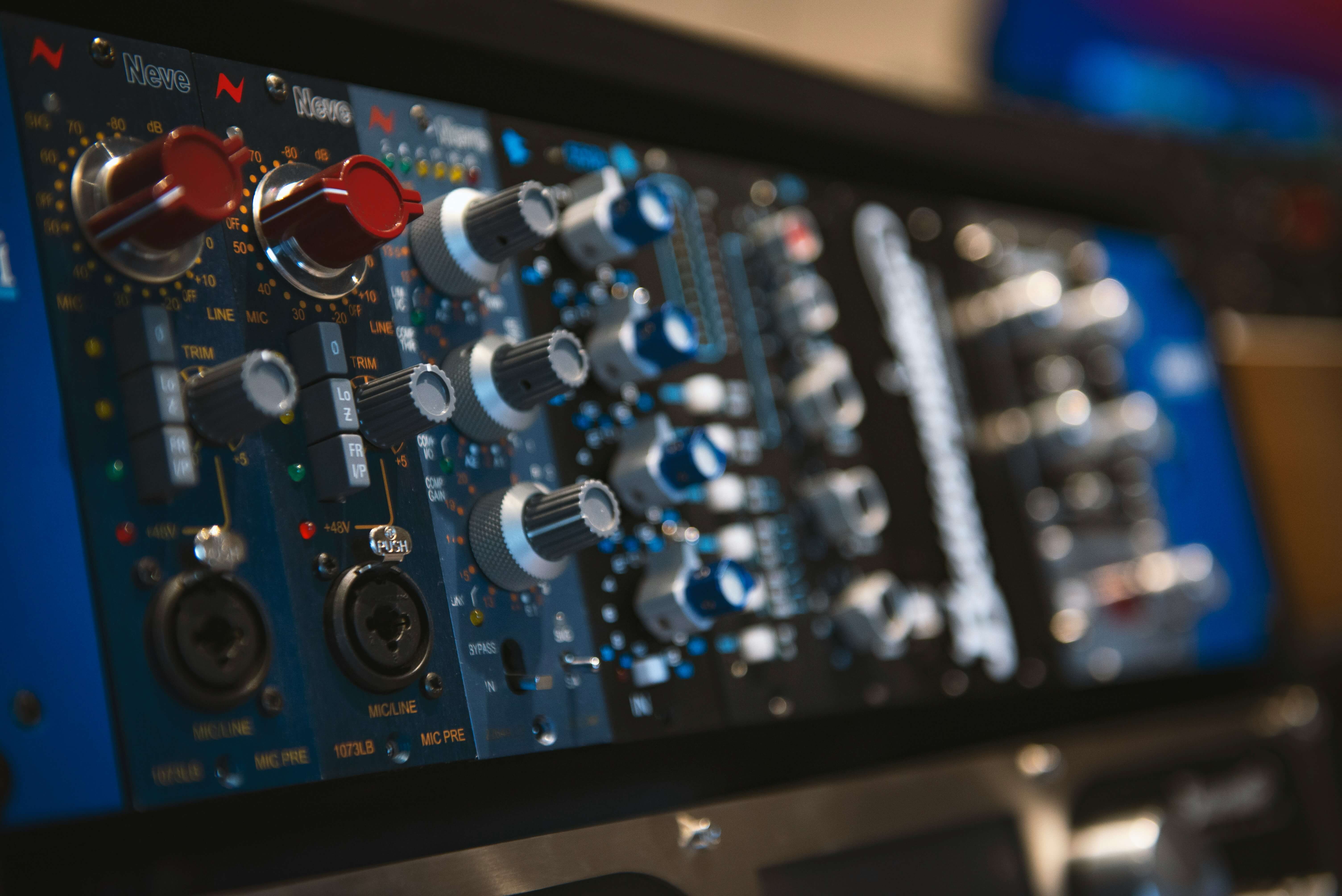
What gear do you need to make a beat?
While you don't need a $100K+ studio to make excellent beats, you do need some equipment to get you started. Creating a beat requires the right gear to transform your musical ideas into polished tracks. This section covers must-have gear for beatmaking, including software, hardware, and some accessoires which are optional.
Choose your DAW
To get started in the modern era of music production, you most definitely need a DAW — Digital Audio Workstation. The DAW serves as your central hub for music production and is home to the creation of your beats, since this is where you create, structure and print your beats. Many DAWs come with a wide variety of stock instruments for you to use in your first beat. Stock instruments have become increasingly better sounding in the past couple of years, so don't underestimate the power of these standardly-included-beasts.
Regarding which DAW to choose, the first hurdle in many aspiring producers' careers is to find which DAW suits them best. Unfortunately, there isn't a definitive answer to this question, but the only correct answer is the one that suits your best. Only you can answer the question which DAW works best for you and the only way to find that answer is by trying different products and experimenting for a while. Start by reading up on the Pros and Cons of different popular DAWs and challenge yourself to make at least one beat in each DAW that sparks your interest.
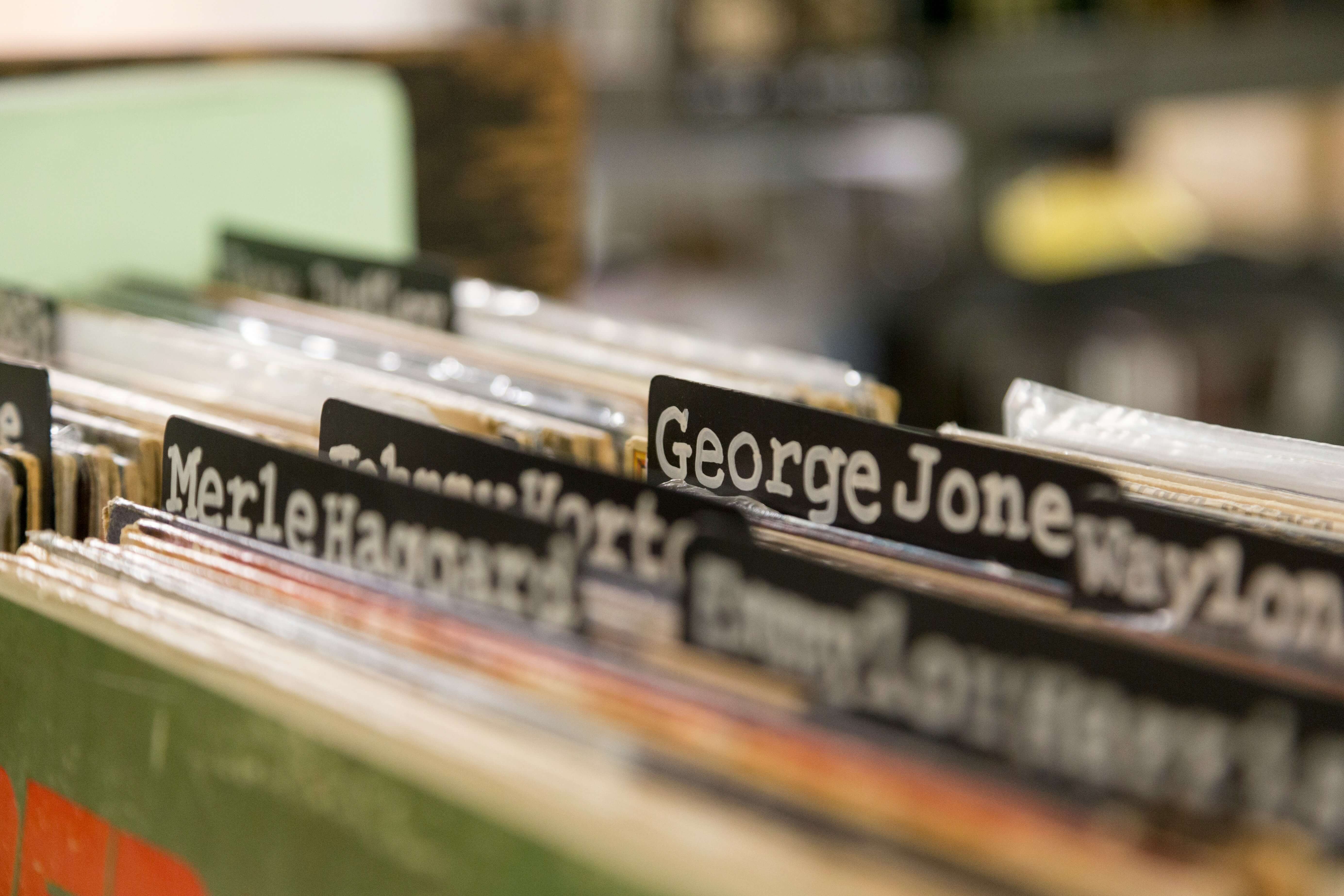
Sample Library
First, you need some sounds. A sample library is a collection of audio files that producers and musicians use in their music productions. These audio files, known as samples, can be various elements such as individual drum hits, drum loops, instrument loops, vocal snippets, sound effects and much more. There are a bunch of free drum kits, sound libraries and 808 samples to be found on the internet to get you started, which are only one short google search away.
Try searching for popular 808s. There are a bunch of iconic 808 sounds that many producer use in modern day beatmaking. Here are some examples of popular 808 to get you started:
Spinz 808: A hard-hitting, punchy 808 kick sample popularized by producer DJ Spinz.
Zay 808: A distinctive 808 kick used by producer Zaytoven, known for its sharp attack and deep bass.
Metro Boomin 808: Associated with producer Metro Boomin, this 808 is known for its clean, powerful low-end.
Southside 808: Named after producer Southside of 808 Mafia, this 808 is characterized by its aggressive and full-bodied sound.
TM88 808: Used by producer TM88, known for its unique texture and heavy sub-bass presence.
Pyrex 808: A gritty, distorted 808 used by producer Pyrex Whippa, known for its raw and edgy sound.
Choppa 808: Recognized for its rapid-fire, choppy sound, often used in high-energy trap beats.
These 808s, and many more samples and 808s from hits, can also be found easily in our app, so be sure to check that out.

MIDI-controller
Next up is the MIDI controller. While this isn't necessarily a must-have, many producers find that it is a remarkable tool for music creation. Whether you're a seasoned musician thousands of hours playing instruments, or a total beginner which hasn't touched an instrument in their entire life, a MIDI controller can be an excellent tool to express your musical ideas and record them into your DAW.
Let's face it: clicking and dragging in your melodies works, but it isn't for everyone. Some producers want to be more expressive, and being able to play notes with either a keyboard or some drum pads can add a whole other dimension for some producers. Also, having knobs and volume sliders at your disposal to draw in automation can add another level of depth to your sound. Sweetwater offers a very comprehensible video that explores a wide variety of options that are out there for beginners, so go take a look if you're interested in that.
Monitors or headphones (or earbuds)
Next, let's talk about how you'll actually hear the audio. There are two main options: monitors or headphones. But what is better? There are numerous debates on whether it's better to make beats using headphones, monitors, or even earbuds. You've likely encountered articles on 'the best mixing headphones of 2024' or 'the best studio monitors within budget X' and might feel overwhelmed with all the options out there.
It's clear that you're probably not going to master your album on $10 earbuds from Walmart, but how do you choose the monitoring setup that is right for you? We want to emphasise an often overlooked aspect of choosing the right setup, and that is practicality.
Studio monitors provide a broader frequency spectrum, emphasize lower frequencies, and offer a more precise stereo image. However, they require an acoustically treated room to perform effectively. If you have thin walls, neighbors who may complain, or work late at night, studio monitors may not be suitable for you, despite some articles suggesting their superiority over headphones or earbuds. Headphones also have the added benefit of sounding the same regardless of your location (given you're not in a super loud environment).
On the other hand, if you have a properly treated studio space and can listen at comfortable levels without disturbing others, studio monitors might be a preferable choice over headphones.
It all comes down to practicality for us. With enough hours of practise and referencing across different system you will become accustomed to your system and know what decisions you need to make to produce the best quality beats. Only you can decide what works best for your situation.
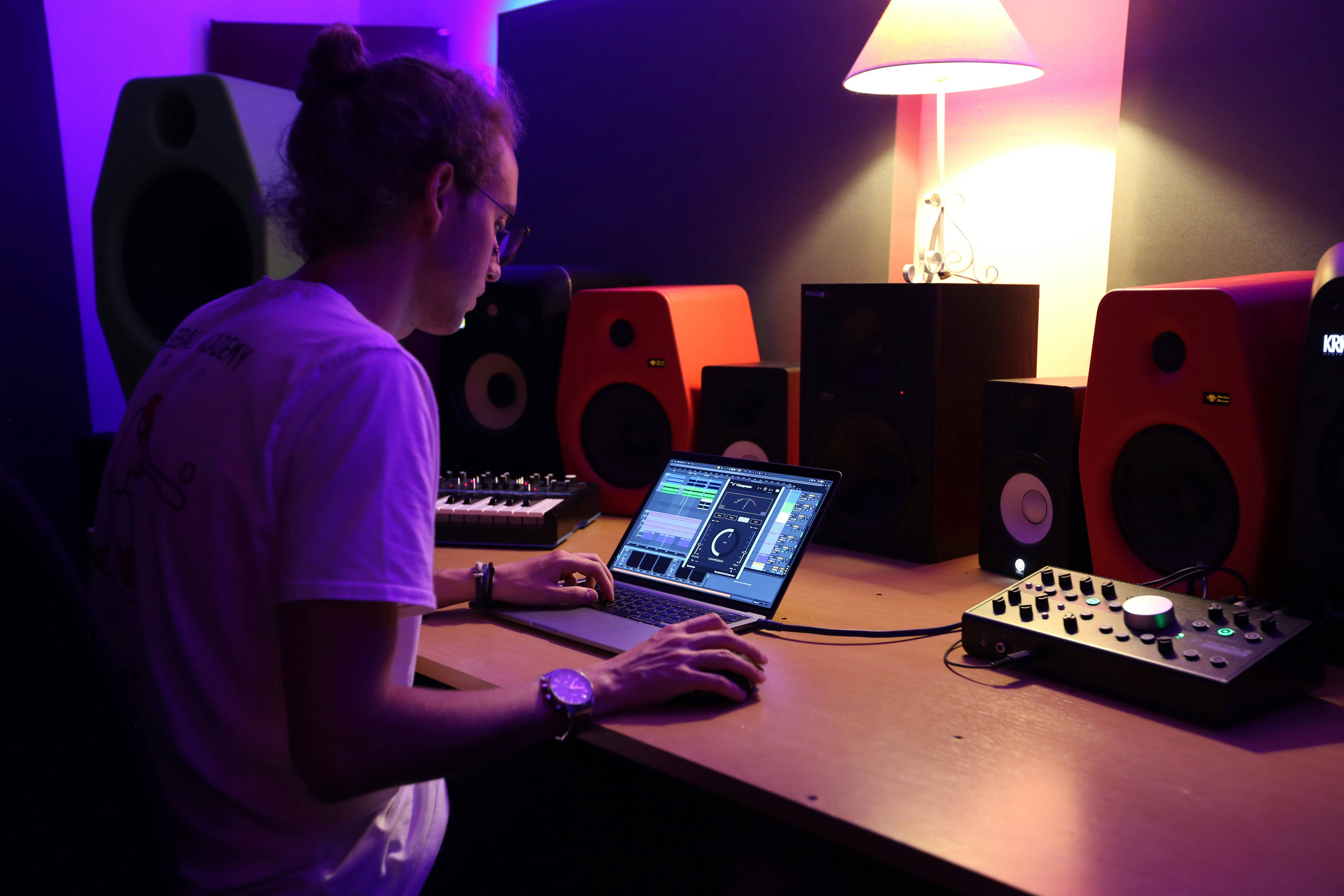
Sampling
Sampling in hip hop is a technique that involves taking snippets of existing audio recordings and integrating them into new compositions. Sampling has become a cornerstone of modern music production, especially in hip hop. Sampling offers endless possibilities for creating unique and layered ideas for creating beats.
Sample selection
So how do you go about your sample selection? Popular artists often search through vast archives of recordings, ranging from vinyl records and digital libraries to field recordings and obscure sources. Some artists search for samples that have a particular mood or contain elements of nostalgia, while others focus on finding unique sounds that can be manipulated and recontextualized.
Whether you're aiming to become a master crate-digger, spending hours hunting for the rarest samples, or simply want to explore your own MP3 library for potential sources, our advice is to dive in and discover what resonates with your personal musical taste. Try listening to your favourite records from your childhood and see if you can find some useable samples in there. It might even evoke some nostalgic feelings in you along the way.
Sampling techniques
If you're new to sampling or looking for additional techniques that you maybe haven't explored below, take a look at the following sampling techniques:
Chopping
Cut out small phrases from a sample and rearrange them into new rhythmic patterns to create fresh sequences. Flipping specific chords or melody notes within a sample can subtly transform a familiar sound, adding a unique twist while preserving its original character.You can also do this by loading a longer sample into a sampler that has a Slice(r) mode. Ableton's Simpler is a great example.
Time Stretching
Adjusting the speed of a sample is an effective method to integrate an older sample into a project with a different tempo. For instance, you might speed up an old jazz record to align with a fast-paced Jersey club beat. Time stretching is a great way to lock samples into new gear.
Pitch Shifting
You will be amazed what altering the pitch of a sample can do for the mood and sound of that specific sample. Try not to judge the original pitch too early and try finding a pitch that works best for your specific sample and genre you're working with.
Reversing
A simple, yet often effective and creative technique in sampling is reversing certain phrases. It's like telling a story backwards. Characters are introduced in opposite order, and plot lines unfold in unexpected ways. Similarly, when reversing a sample you might find a whole new perspective on said sample and get inspired for your most creative beat yet.
Re-amping
Found the perfect sample but looking to infuse it with a new vibe and character? You might want to experiment with re-amping. Despite it being a somewhat outdated recording technique, re-amping still offers a unique charm. Want a more overdriven, gritty sound quality for your sample? Try playing it through an old speaker at just a little too much volume, and recording the output with your mobile phone microphone. It might just be the final touch of character you're looking for to make the sample sound more authentic.
Pros and Cons of Sampling
Sampling is a great technique that's been used by many generations in hip hop music production. It's a fun and interesting way to get started on your next beat, without having to compose an idea from scratch yourself. There are, however, a few disadvantages as well.
Pros
Creative: Fun and interesting way to interact with tracks you're familiar with
Inspiration: Endless options in source material
Time efficiency: Not having to learn complex instruments
Unique sound design: There's beauty in obscurity when it comes to sampling
Cons
Copyright issues: getting a sample cleared can be very difficult
No full control: you cannot change individual notes or chords in the sample. The sample might also not be of high quality and require technical skills to integrate into a modern mix
Lack of originality: when you over-rely on samples, it may limit the originality and creativity of your personal sound
Balancing these pros and cons requires thoughtful consideration of your goals as an artist while being mindful of the legal obligations. Whether sampling is for you is up to you to decide, but we highly encourage you to give it a try.

Iconic samples in 2024
So what are some examples of samples in modern day hip hop? Here's a list of hit records in 2024 that contain samples from other records:
Future, Metro Boomin, Kendrick Lamar - Like That
This iconic track features samples from 2 different records:
Rodney O and Joe Cooley - Everlasting Bass (1988) (from 0:00)
Easy-E - Eazy-Duz-It (1988) (from 0:00)
Kendrick Lamar - Not Like Us
One of the hardest tracks in the Kendrick Lamar vs. Drake beef contains samples from 2 records and a movie
Monk Higgins - I Believe to My Soul (1968) (from 0:29 and 1:04)
Just Re'd Up - I'm Good (2011) (from 2:29)
The movie: 'The Sixth Sense' - I See Dead People (1999) quote
21 Savage - redrum
Viral hit 'redrum' by 21 Savage contains samples from 2 records and a movie
Elza Laranjeira - Serenata Do Adeus (1962) (from 0:00 and 0:59)
21 Savage - A lot feat. J Cole (2018) (from 0:28)
The movie: 'The Shining' - Here's Johnny! (1980) quote
There are many more samples to be found in popular hit records and can be found with minimal research, so there's a lot to be discovered. Samples from popular hit records are a great tool to get started on your next beat, so be sure to check out the Producer Assistant app which features a whole catalog of sounds used in popular hit records.

How do I make a beat?
Now that you have an idea of what gear you need to start creating, and are aware of some sampling techniques, it's time to start your first beat. There are no set rules for creating a beat, every production is different, but there definitely are some common ways to get started and avoid staring at a blank project for hours.
Start by defining your vibe
A great way to start a beat is by deciding what type of vibe you're looking for. What mood are you in today? Can you find a record that reflects that mood in terms of sound and production? Maybe you found multiple tracks that fit the vibe you're looking for. Try looking for similarities between those tracks. They might:
Use the same chords
Use a similar rhythmic pattern
Be in the same tempo
Be structured similarly
Be in the same key as one another
Finding little bits and pieces of information of the type of track you're looking for can be a great way to start working on ideas of your next beat. Copy the parts you like, alter the parts you don't like and start from there. This is a great way to start the idea for a new beat.
Finding your music loop
Starting with the music loop first (before adding drum) is a commonly used technique to make a new beat. If you're used to starting with the drums first, this can be a great way to switch up your source for inspiration. There are loads of different music loops available on the internet in the form of samples, construction kits or interesting presets. Synth Kits in the Producer Assistant app are also a great way to get started on your musical idea, having full access to the WAV stems, but also all individual presets for that Synth Kit.
Try to create motion and variety in your music layers by experimenting with different rhythms and effects to make your musical idea bounce before adding drums. Set yourself a goal to make the music loop groove without exclusively relying on your drum pattern.
Add 808s
808s are the core of any hard hitting hip hop record and are essential to making sure your beat knocks hard on big systems (and headphones). Finding the right 808 can be a tedious process, but can make or break an otherwise great beat. When adding 808s, try to make sure the rhythm complements the groove of your drum pattern, without distracting the listener too much from the music loop. Also make sure that the notes the 808 plays are compatible with the chords being played.
Where to find good 808s?
Aside from the list of popular 808s featured in the top half of this article, there are a bunch of (free) resources and sample packs online that contain some great options for 808s, but more is not always better. If you're curious about the 808 sounds used in popular hit records, be sure to check the 808s section in the Producer Assistant app to expand your arsenal of hard hitting 808s.
Knock on some drums
Hip hop wouldn't be hip hop without some hard hitting and well-grooving drums. They define the groove of some of your favourite hit records. If you're unsure on how to start programming your drums there are a few techniques you can use to find the perfect pattern. You can:
Copy the pattern of your favourite reference track
Find some inspiration in existing drum kits
Download different drum loops of individual instruments and layer them together
A great way to get started is to place a closed hihat on every 8th note. Then add a snare drum on every 3rd beat as a base for your drum loop. You can then experiment with placing a kick drum in several different places to define the groove of your beat.
Loops vs One-Shots
Using loops has its advantages, but also comes with some disadvantages. You can create a head start by dragging in near complete drum loop, which in turn gives you way less control over the placing of individual drum hits — you're bound to the structure of the drum loop. This becomes even harder when multiple drum layers (such as the kick and hihat, or kick and ride) play at the same time. This makes it more difficult for your drum loop to sound unique and also makes the mixing process in the end a lot harder since you lack control.
A technique often used is to use a drum loop that you love as inspiration, and then recreating the drum loop with individual drum samples. By doing this you gain a fundamental understanding of the rhythmic aspects in the drum loop, while also retaining control over which sound- and mixing decisions you make. If you're looking for high-quality drum loops to use and deconstruct, you can find loads of Drum Kits in the Producer Assistant app to get you on your way.
Arrange and expand your beat
Now that you've combined all the elements for your beat, it's time to make the full arrangement. This is where your beat turns into a track. It's important to capture the attention of the listener, and maintain that attention over the course of your full beat. You do this by creating some tension and release throughout your arrangement. Duplicate your 8- or 16-bar loop in your timeline and try to make variations in each section by removing and adding certain elements throughout the beat. Manage your energy levels by creating different dynamic parts in your composition. If you're stuck on how to arrange your beat properly, here's some tips:
Analyse hit records
Studying and analysing the structure of popular hip hop records is a great way to learn about arranging your beats. Try to write down every change you hear from the initial beat, whether that be a change in sample pitch, removal or addition of certain drum elements, addition of new musical elements etc. Doing this will create a framework which you can then apply to your own beats: you don't have to reinvent the wheel!
Use rap acapellas
There are loads of rap acapellas to be found online which you can use to test the arrangement of your beat. Load in an acapella that suits your track and try to structure your beat around that acapella. Determine which part of the acapella is the verse, and which is the chorus and reflect that in your beat arrangement. Maybe the acapella puts emphasis on some specific words. You can for example emphasise these words by removing the drums during those words to shift all the attention to the vocals. Little things like these make for a great way to gain a better understanding of how to keep te listener engaged and playing around with tension and release.
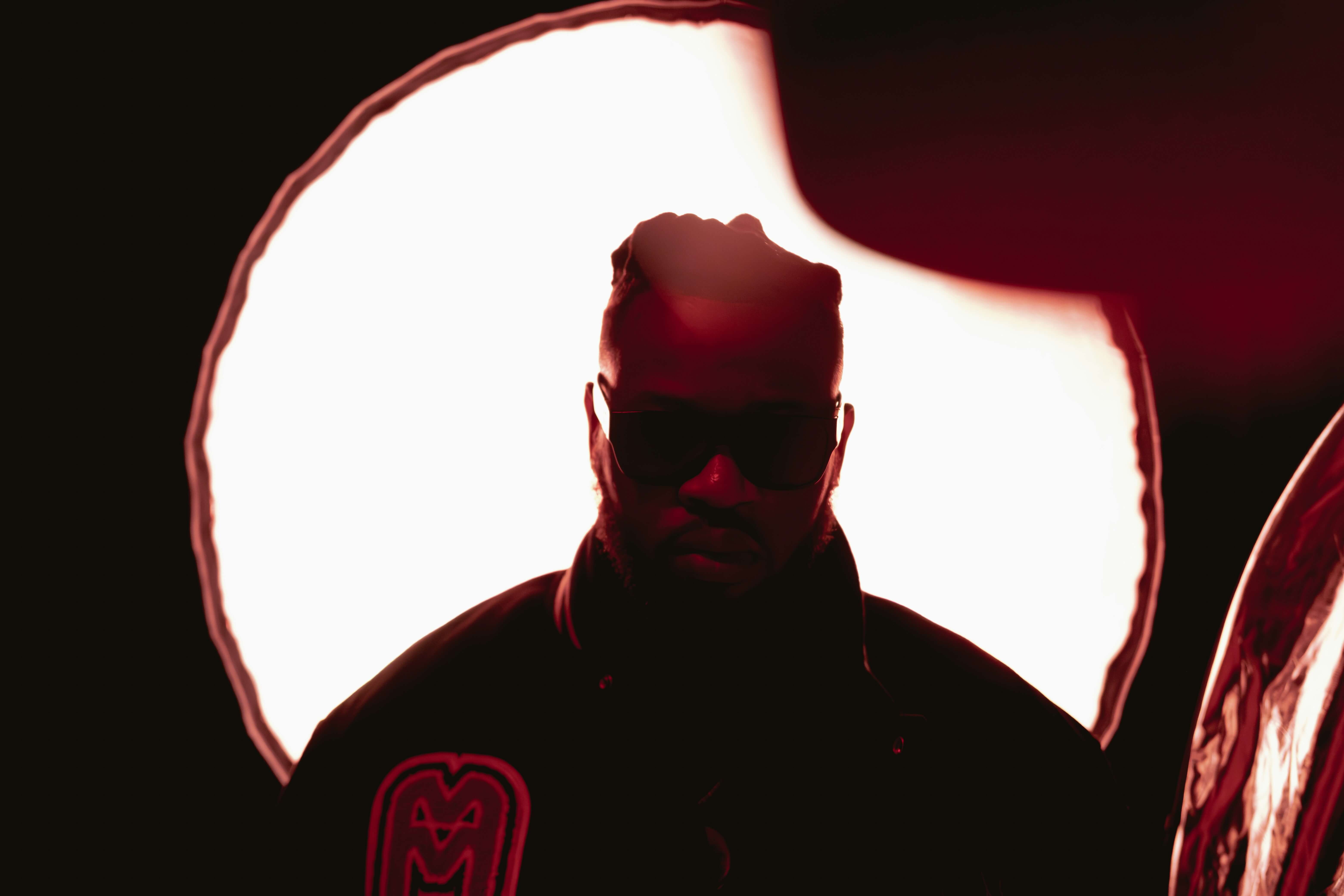
The secret to becoming a great beatmaker
Becoming a great beatmaker isn't an over-night process and requires time and determination. Unfortunately, there just isn't a button that magically transforms you into a godlike beatmaker, but there are a bunch of things you can do to drastically speed up the process and avoid becoming stuck in a rut.
Practise, practise, practise
There's no way around it, you have got to put in the work. Try to approach beatmaking with an open mind and take your time experimenting with different styles and subgenres and most importantly: have fun doing it! Enjoying the beatmaking process is priceless and ensures you're not prone to burnout in the long run.
The quality of your source material
The quality of your source material, drum samples, loops, music samples, effects, highly influences the outcome of the quality of your beats. You can't polish a turd, so make sure you give yourself a head start by investing time and effort in finding great quality source material. This prevents you going into the mixing stage and fixing problems in the mix that originated from poor sample and sound choices. To find this high quality source material, consider joining discord groups and forums, and reading up on blogs to stay up to date with all the tools in the music production landscape. Producer Assistant provides loads of high quality source material in the form of samples from hits, drum kits and synth kits on a weekly basis so you stay up to date with all relevant trends in hip hop music production.
Consistency
Finishing beats on a consistent basis is key to developing your skills as a beatmaker. Set goals for yourself, like finishing at least one beat a month, week or even a day. The more you create the habit of finishing what you started, the better your output will be. Schedule your beatmaking sessions and set deadlines for yourself to stay productive.
Show your work
Consistently showing your beats to the outside work will not only include your potential viewers in your development and journey as a music producer, but also opens doors for collaboration with other creators. Sharing your beats with the outside world is just as important as consistently finishing your beats, so try to combine those. Whenever you finish a beat, upload it to a service where people can freely listen to the beat and make a short video for your socials to showcase your work.
Reach out
There are other aspiring beatmakers out there and sharing experiences and learning from them is a very valuable tool to speed up your learning process. Show interest in their beats, send them a DM and ask questions about their process and have conversations about their musical developments. You might even make some good friends along the way.


